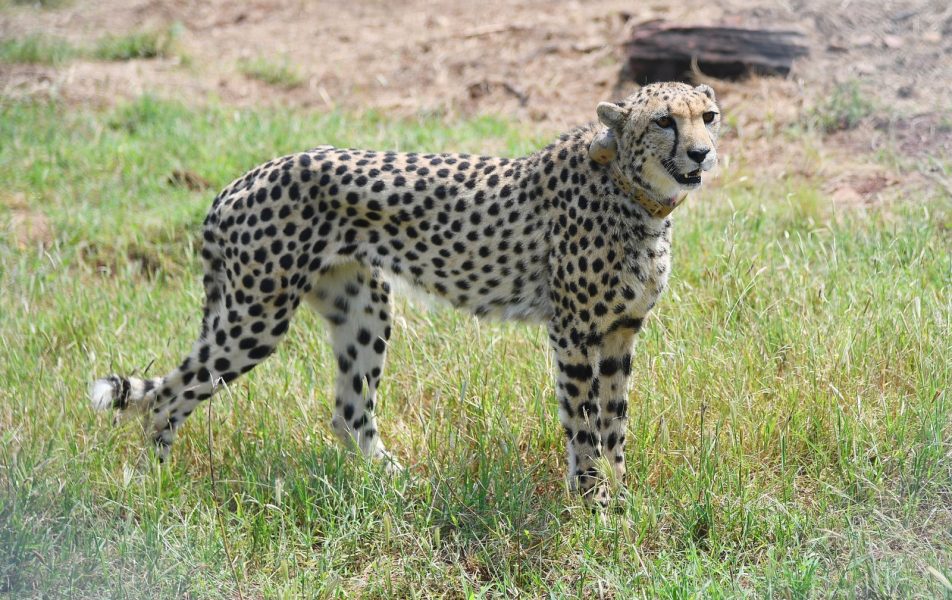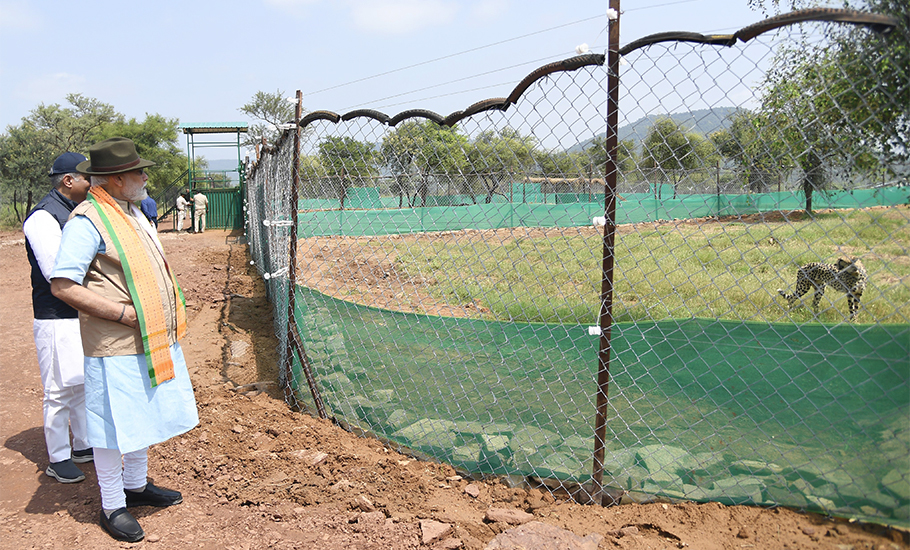
Cheetahs in Kuno caught in wildlife, bureaucratic conundrum

What should have been smooth sailing for the re-introduction of cheetahs in India has turned into a sudden plunge in rough weather.
No, it’s not the death of six cheetahs, including three cubs, in their new home of Madhya Pradesh’s Kuno National Park. The deaths triggered a big media circus on expected lines, but otherwise proved to be a storm in a teacup. As historical data and several experts have put forth, these deaths are within the permissible range. In the wild, the cheetah cubs’ mortality rate can go as high as 80 percent and can be 50 percent for the adults. That is the way of Mother Nature to bring about harmony and balance between the predator and the prey.
Also read: India’s cheetah reintroduction plan ignored spatial ecology: Scientists
But what is really mind-boggling, and stretches the limits of credulity, is the post-haste realization that Kuno is too small a place to hold all these cheetahs, and one has to look for alternative sites. Twenty-one cheetahs were brought here after “detailed study’’ (ahem), and at that time nobody raised a finger. Probably nobody dared to, as Prime Minister’s Office itself, was keeping a tab on the goings on and no forest official wanted to get caught in the crosshairs.
One wonders why the South African experts, who now point at the fallacy of “putting all the eggs in one basket”, were studiously mum when the cheetahs were brought to Kuno in two batches? Of course, that does not absolve our own forest officials for not bringing up the issue of Kuno’s inability to hold more than 10 cheetahs there at the time of re-introduction.
Also Read: Female cheetah dies in MP’s Kuno National Park; third death in 42 days
The first alarm bell, signalling the first hiccup in the smooth execution of Project Cheetah in India, came from the Madhya Pradesh Forest Department in April this year when it approached the National Tiger Conservation Authority (NTCA) in New Delhi to look for a “second home’’ for the cheetah. It was argued before the NTCA that Kuno, spread over 748 sq km, was in no position to hold more than 10 cheetahs.

Confirming the development, Chief Wildlife Warden of MP JS Chauhan could not have put it in simpler terms.
“We don’t want to take any risk with the Cheetah Project. So we are looking at all aspects and have informed the NTCA about it. The NTCA and the Environment Ministry will take the final decision,’’ he said. But the ball had only started rolling, and soon it would underscore a common knowledge in the political and official circles of India, of the left hand not knowing what the right hand is doing.
In April 2023, the Madhya Pradesh government declared it was searching for a second site for the Indian cheetahs and said it had identified it. It was none other than the sprawling Gandhi Sagar Wildlife Sanctuary in the state. According to news reports, in a meeting of the state Wildlife Advisory Board, Chief Minister Shivraj Singh Chouhan directed the forest officials to develop Gandhi Sagar for cheetahs in the next six months.
Also read: Cheetah project has not failed, fence their habitat: South African expert
Spurred by the development, the MP officials zeroed in on not only Gandhi Sagar but also a third possible habitat for cheetahs, in case the need for it arose. And that place is Nauradehi sanctuary, again in Madhya Pradesh.
According to CP Goyal, Director General of Forests and Special Secretary in the Union Ministry of Environment, “The Madhya Pradesh Government has informed that the Gandhi Sagar Wildlife Sanctuary will be ready to welcome the cheetahs by November this year. But the way the preparations are going on, the habitat will be ready to receive the big cats before that.’’
Relocating some cheetahs to new territories is just one of the unfinished items on the table. A much bigger question is whether to fence the cheetah habitat in Madhya Pradesh. In Africa, all the wild cheetahs survive in the fenced territories and this is what the South African cheetah specialists have urged the Indian authorities to do. The argument is that the fencing would insulate the cheetahs not only from leopards, hyenas and other dangers but also from possible man–animal conflicts. Many villages and human settlements dot not only Kuno, but also most of the sanctuaries and reserve forests in India. This is an inescapable reality and has led to annual toll on wildlife, including tigers, leopards and elephants.
Also Read: Five more cheetahs to be released into wild in MP’s Kuno National Park before monsoon
But the suggestion to fence the cheetah habitat has also been nipped in the bud. Rajesh Gopal, the former NTCA head and at present the chairman of 11 members Cheetah Steering Committee, has described the act of fencing as going “against the basic tenet of wildlife conservation”in India. Speaking with PTI, he added for good measure: “It’s absolutely bogus to think of fencing the habitats. We have our own socio-cultural issues. We have been handling tigers for the last 50 years and we know what the human–wildlife interface is. We can handle cheetahs too.”
And just when one envisaged too many cooks stooping over one dish came another twist in the tale. On June 22, Union Environment Minister Bhupinder Yadav said that there was no plan to shift the cheetahs from Kuno to anywhere else as of now. He, however, clarified that Gandhi Sagar had been identified as an alternative site in case Kuno posed problems to the cheetahs.

